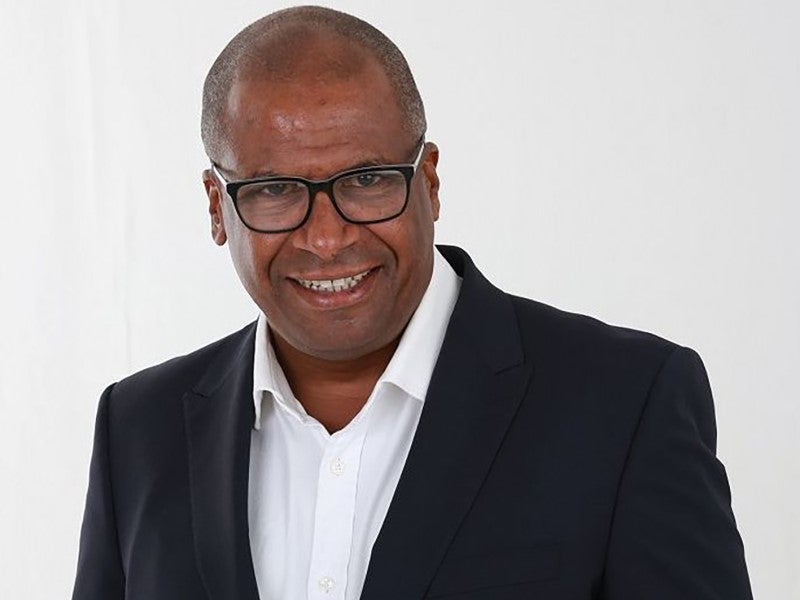
Asset finance professional Roy Royer charts his 40-year career in the UK and reflects on whether the colour of his skin has affected his rise in the industry. Alejandro Gonzalez looks at ethnic diversity in asset finance and leasing.
Roy Royer, a Dominica-born asset finance veteran of 40 years in the UK, says his secret to success in business has been “to see obstacles not as blockages but as challenges to be overcome” and dealing with instances of racial discrimination have been no different.
“I arrived in England in 1970 aged 10 with a heavy West Indian accent, which caused me all sorts of grief at school,” recalls Roy of growing up in south-east London and Kent.
To fast-track Roy’s British assimilation and to close the cultural gap, the family signed him up for elocution and deportment lessons, as well as classes in piano and violin.
“I was given the whole Pygmalion treatment,” he remembers.
By the end of the process, Roy had become more anglicised, but if his father’s game plan was for him to become a university graduate, he was sorely disappointed.
“I liked to learn, but I just hated being taught,” says Roy of his secondary school years which ended without him matriculating and not wanting to re-sit his university entrance exams.
How well do you really know your competitors?
Access the most comprehensive Company Profiles on the market, powered by GlobalData. Save hours of research. Gain competitive edge.

Thank you!
Your download email will arrive shortly
Not ready to buy yet? Download a free sample
We are confident about the unique quality of our Company Profiles. However, we want you to make the most beneficial decision for your business, so we offer a free sample that you can download by submitting the below form
By GlobalDataFormal education
Instead, he opted to join the workforce aged 19, much to his father’s annoyance who believed that without formal qualifications, he would get nowhere.
A chance citing of a job advert in the Evening Standard for a Barclays Mercantile Credit junior clerk quickly led to him being offered the position. “So I got into asset finance entirely by accident, just to prove my father wrong,” he says.
Joining the workforce “I always felt that being West Indian was an advantage, because you stood out ‘for ill or for good’, but this could work to your advantage”, remembers Roy.
It’s a matter of “having the right attitude” and it helps to have “a sponsor”, someone who can take you under their wing, who believes in you and can guide you professionally, he says.
“Throughout my life, my attitude has been to see obstacles not as blockages but as challenges to be overcome.”
Although Roy had what was essentially a mailroom job stuffing and sealing envelopes, he soon noticed others his age in his department who wore suits and were part of the management development programme (MDP), spending six months at a time in various departments before being made section managers. His early attempts to join the MDP proved unsuccessful due to his lack of tertiary qualifications.
He soon found out which departments the graduates had mapped out for them as part of their three-year programme, and so Roy applied for a transfer to the first of these departments, in effect shadowing the MDP learning journey through his own effort.
But after 18 months on his self-styled MDP trail, HR got wind of his plan and put a stop to him moving any further along this path, “which was a bit irritating,” he recalls.
Big break
Fortunately for Roy, at this point he came to the notice of his section head who took a shine to him and tipped him off about a sales job that he was encouraged to apply for and got, thus giving Roy his first big break in the industry.
“It’s important to not see colour as a disadvantage” and with it will come opportunities, says Roy looking over his career.
But what followed next was less fortunate.
“About 18 months later, his new branch manager upped and left with his team to form a rival leasing company, Grindleys Asset Finance (which went on to become BNP Paribas Leasing).”
In the wake of the team poaching and under a new section head, Roy was to smash his yearly sales target of £4m, making £16m and £18m in the next two consecutive years, earning him the right for promotion to manager, or so he thought.
Management material
During a formal interview to discuss his suitability to join the ranks of management, Roy was told by his regional director that: “I would never achieve a managerial position because my face did not fit, and I should stop the nuisance of my applications. That was in 1987,” he recalls.
“At that point, I knew I wouldn’t get any further at Barclays so I left,” says Roy.
[Leasing Life approached Barclays for their reaction to this account, but the bank declined to comment on its contents.]
Roy, along with three other colleagues from Barclays, threw their lot together and set up their own asset finance brokerage, Commercial Asset Finance, dealing mostly with small-ticket equipment.
He says they did well for three years, until the 1990 recession when they felt the fledgling company would not survive the ensuing financial storm so the company was wound-up.
A six-year stint as a sales director with ING Lease followed. He described the Dutch bank as “fabulous to work for and where meritocracy ruled.”
But it was during these years that Roy had another encounter with racist attitudes, this time in Madrid in the early 90s.
“It was my idea to lead a European delegation to Spain for an ING Lease conference,” he remembers.
Twenty or so ING delegates were booked into a hotel in the city, including Roy, who as a leader in the delegation had been assigned a hotel suite, but despite others being promptly shown to their rooms, Roy experienced an odd series of delays and obfuscation until finally, “I was shown to what could only be described as a broom closet.”
And when he complained, staff said no other room was available for him. “I could sense there was something not quite right going on,” recalls Roy.
In a show of solidarity, Roy’s fellow ING delegates told hotel management they were planning to decamp to another hotel in protest. “At that point, the hotel found me a room to stay,” he recalls.
The years since, Roy worked for three years as a leasing consultant for Alstom Power, an energy company, he then set up Whatrate.com “the first leasing fintech in the UK” in 2000, he says proudly.
His dot com experience somehow morphed into him developing a taste for underwriting and financial risk insurance in the asset finance world.
Somerset Equipment Finance (UK)
Today, Roy is head of business development for Somerset Equipment Finance (UK), part of Somerset Capital Group, a US-domiciled leasing company active in the US, Canada, Southeast Asia, the UK and Europe. Roy was taken on in 2012 to set up the UK/European operation.
The US parent has been in business for almost 40 years and is owned by its management’s private equity firm and has $1.4bn in assets under management.
Somerset Equipment Finance (UK) does not operate a typical lessor business model but is a niche player concerned with residual value, essentially the market value of an asset at the end of the lease period. So the business offers varying degrees of risk mitigation over the life a piece of equipment.
“Our business operates by putting equity into transactions by way of residual value, buying out residual value positions or taking residual value positions.”
Ethnic diversity and asset finance
When asked to explain the lack of ethnic diversity in asset finance today, Roy says that if the industry is not selling itself to a potentially hugely talented pool of individuals this is due to a problem with awareness and education.
“There is a dearth of black people in middle management and senior management,” says Roy.
On one side of the ledger, potential candidates are simply not aware that openings in asset finance exist or people simply discount financial services as they have no inlet and they feel they need one to get by.
“As an industry, we need to reach out more into those communities. They need to know there is a place for them at this table,” he says.
He adds that while his career in asset finance has always been about aptitude and attitude, the sector needs to do more to develop apprenticeships and mentoring programmes for those that don’t have family, educational or informal connections.
From the perspective of ethnic minority communities, “they probably think they don’t have the right old school tie connections and are unaware these old ways are breaking down,” he says.







